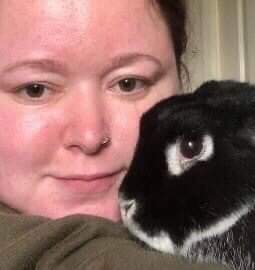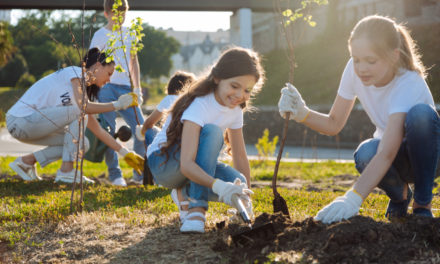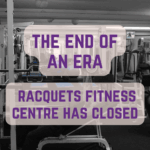We’ve seen and heard some disturbing stories about children in pushchairs and those just playing in the local parks having close encounters with Red Kites. We wanted to help get the message out about the dangers of feeding these beautiful creatures, that we are very lucky to have in the area.
We can’t think of anyone better to speak to than one of the amazing campaigners of the local Red Kite Campaign.
We spoke with Janet Stevenson; who has lived in Thame for 11 years and has two young children, as well as working with children and young people, started campaigning along with a few others to help stop people feeding the Red Kites in the area and are hoping to warn others of the dangers.
So a big thank you to Janet for supplying us with this important information and we hope that it can raise the awareness.
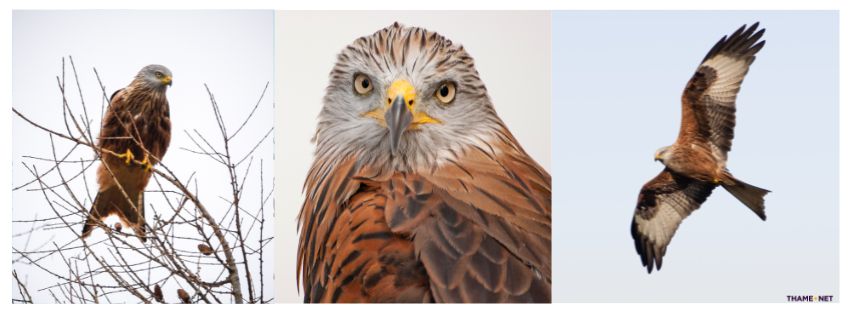
Why I started the campaign, when and who is involved
I have admired the Red Kites from afar for years and feel incredibly lucky to live in an area where their population is thriving. I love to see them chasing one another in the sky, particularly at the time of year.
About 18 months ago, I was moved by a post on social media about a young boy who had been walking to school, and had his breakfast snatched out of his hand by a Red Kite. He was left with a large cut in his face and his mum spoke of him feeling frightened and traumatised. If I can remember correctly, he was only 7 years old. At this time lots of people in Thame posted on social media saying they had been affected by close encounters with Red Kites. People overwhelmingly feel that it is the practice of feeding the Kites in parks and gardens that is encouraging them to come closer to humans than they naturally would. The RSPB and other charities I’ve been in touch with are of the same view and support the no feeding message.
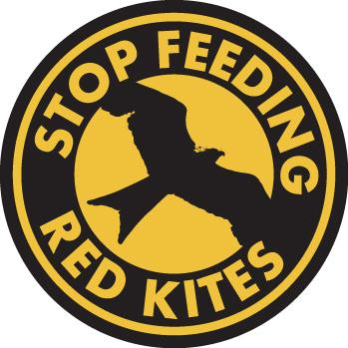
I felt that I wanted to do something to stop this from happening again, so I did some research and made a plea for support. Helen and Katherine got in touch and we decided to start an awareness raising campaign to stop people from feeding the Red Kites and help them understand the detrimental impact this is having on these beautiful animals, as well as the difficulties it is causing for our community.
Why it is important (dangers for humans and the animals)
People have reported food being snatched from their hands by the Kites and that of their small children. Food has also been stolen from picnics and barbecues in people’s gardens and community spaces in Thame and surrounding areas. People have reported minor injuries from the Kites’ talons. This is because the Red Kites are associating people as a source of food due to the practice of feeding them in gardens.
Since setting up the campaign, I’ve had three close encounters myself, involving the Kites snatching food from my hand, from lunch in a friend’s garden and also from my son, who was 2 years old and in his pushchair at the time. I have also met and heard from people that have been affected – from being scratched on the hand by a Kite snatching chips from their hand, to a lovely elderly lady that I met who had been knocked to the ground in her garden by a Kite snatching a scone from her hand.
This issue has been likened to that of seagulls in seaside towns, but these birds of prey are a great deal bigger than the gulls. They have a wingspan of around 6ft and weigh around 1kg. They can be very frightening close up, and are much better admired from afar.
Scraps of meat being left in gardens can encourage rats and other vermin. There have been reports of meat being dropped by the Kites into other people’s gardens and the Chiltern Preservation Trust has in fact referred to a case where meat was dropped onto people’s heads! Feeding practices are also encouraging a large number of Red Kites into the area and therefore discouraging smaller species such as song birds.
I appreciate that some people may be confused, as the advice around feeding has changed over the years.
When the Red Kites were initially released in the early ‘90s, the community were encouraged to feed them. The population around the Chilterns is now strong and they can feed and thrive successfully without human interference.
Unfortunately, the practice of feeding Kites is not only negatively impacting on our community but also these beautiful birds themselves.
The food that is being provided to the Kites is mostly scraps of cooked and uncooked meat which do not present a healthy diet. Feeding also discourages the birds from expanding their range and looking for new breeding territories and sources of food, which in turn disrupts their natural population spread.
Sadly, the Red Kites are also becoming over reliant on humans and are losing their natural scavenging skills.
There are further concerns that Red Kites are beginning to be considered as a pest and there is a risk of persecution, which is the reason that they originally died out in the first place.
What we are doing to tackle the issues
We set up a fundraising page and we received a small number of generous donations from the community.
Katherine Price is a talented graphic designer and donated her services, designing some beautiful, eye-catching posters and leaflets – hopefully some of you have seen them around the community.
We were also invited by BBC Radio Oxford (on several occasions) and BBC Radio Berkshire to share information about the campaign and to raise awareness.
It seems that there are similar issues further afield than Thame and the areas directly surrounding us.
What the community can do
We would love you to get behind our campaign by spreading the ‘no feeding’ message.
If you are feeding the Red Kites, then please follow guidance from the RSPB and gradually reduce your feeding until this has completely stopped.
We are also looking for volunteers to put up posters in their homes or businesses and for people to deliver leaflets in their streets.
Please follow our Facebook page ‘Red Kite Campaign’ to get in touch and keep up to speed with the campaign.
If you have had a close encounter with Red Kites, then please contact your local town council – if they are aware of the scale of the problem, then they may help us do something about it.
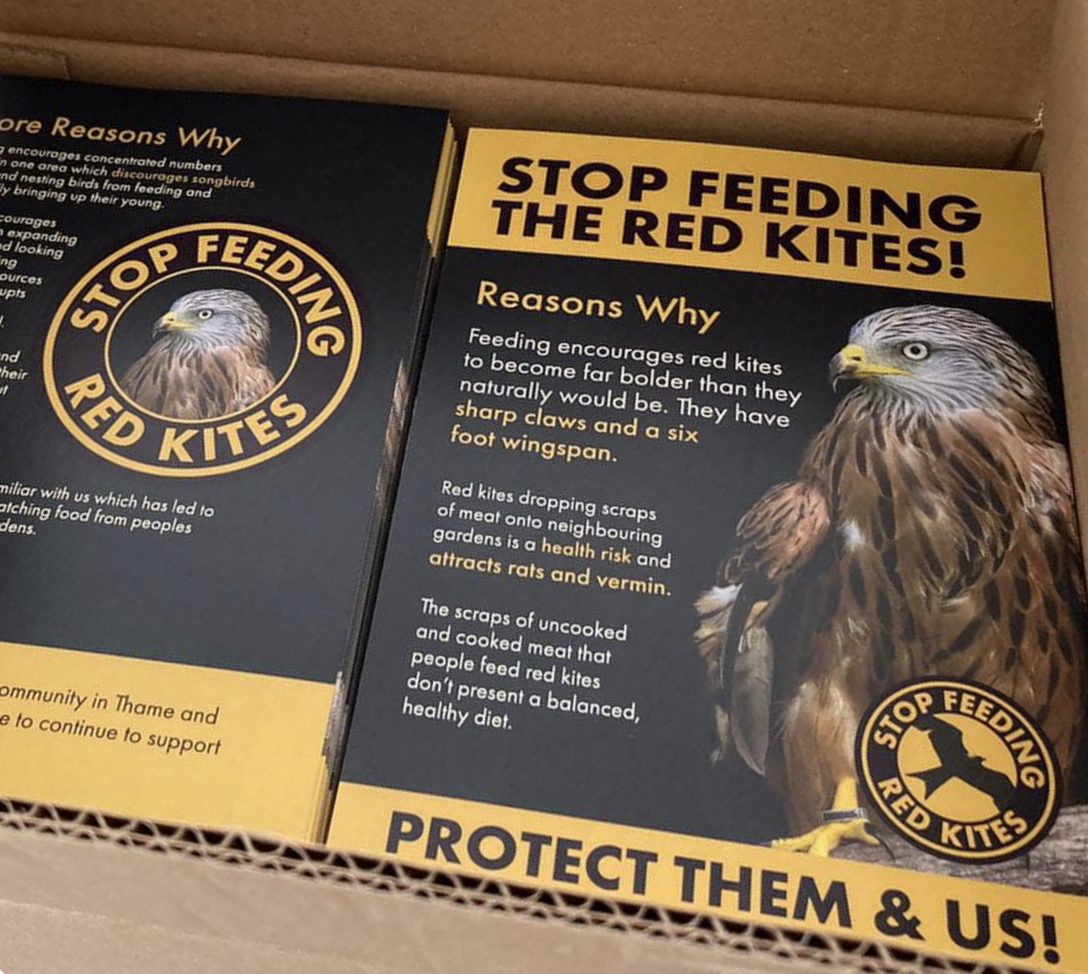
Wallingford Town council have set up their own awareness raising campaign.
Let’s continue to value our beautiful Red Kites by admiring them afar and allowing them to be the magnificent wild animals that they are.
– Janet Stevenson


